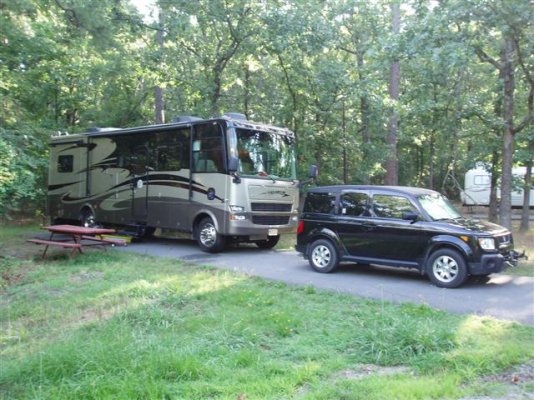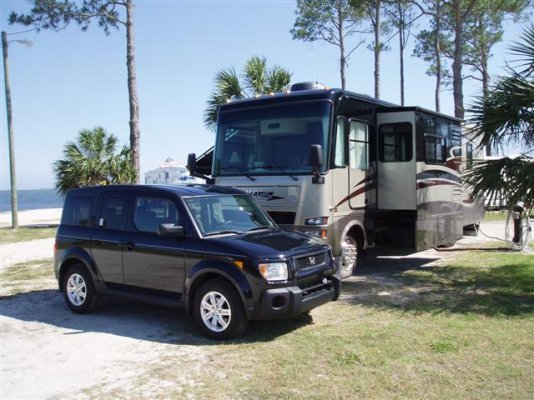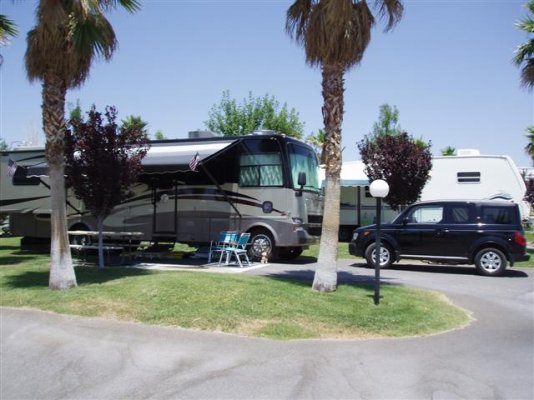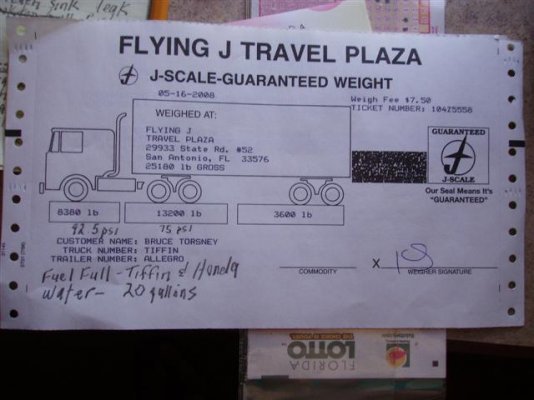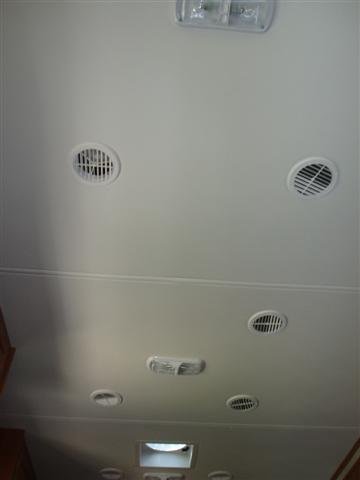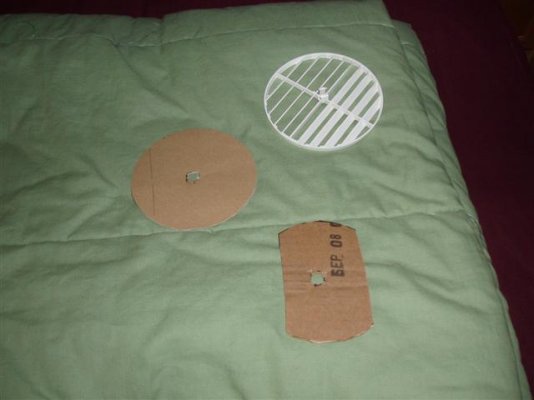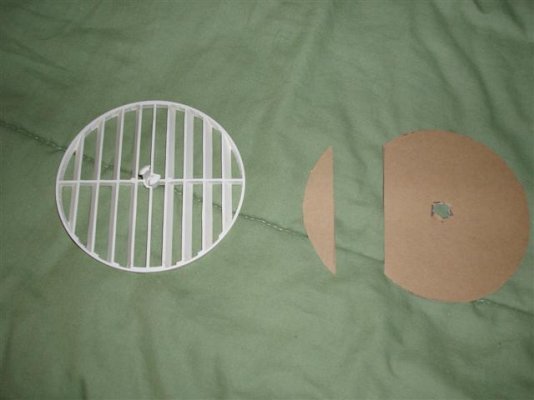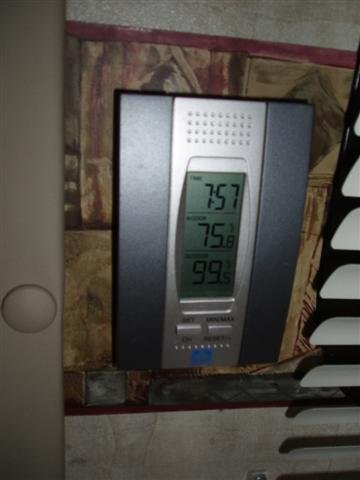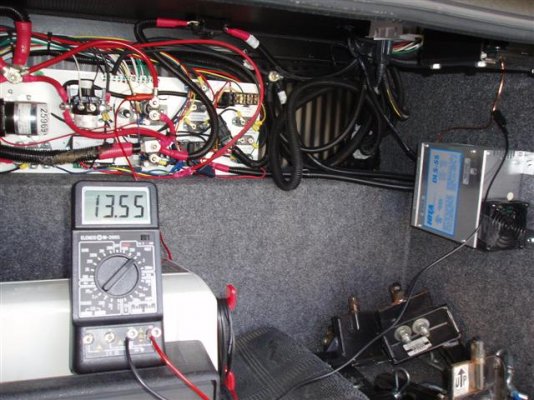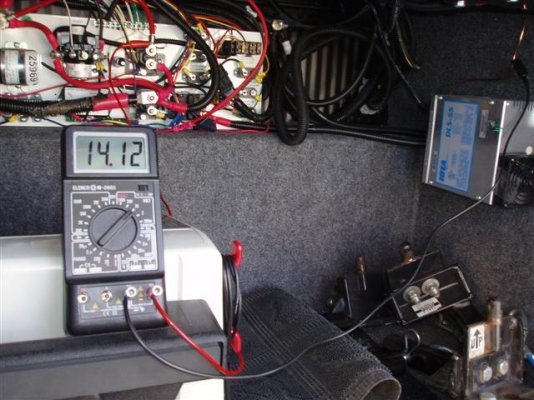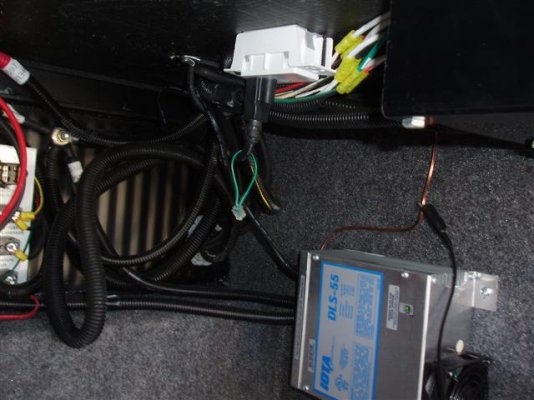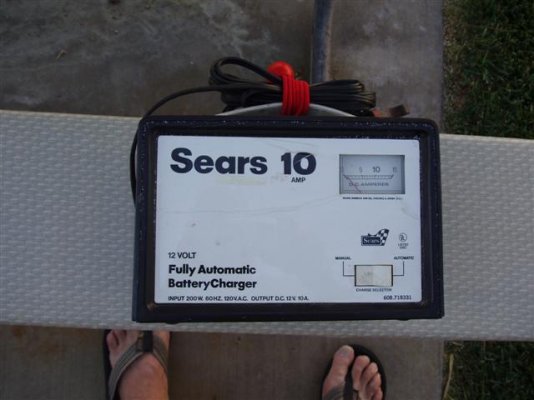IOTA DC CONVERTER, Model DLS-M 55
All the lights in a motorhome are 12 VDC and are supplied by the house battery(ies). All of the electronic controls for the motorhome appliances, run on 12 VDC and are supplied by the same house batteries. The DC Converter is necessary for two reasons: 1/ When your motorhome is plugged into 120 volts AC, the DC Converter take over the duty of the house batteries, supplying up to 55 amps (ours) of current for the DC circuits. 2/ It provides a charging capability for the house batteries. While it is taking over the duty of the house batteries, it also supplies them with 13.6 volts DC. This 13.6 volts is commonly referred to as a "trickle charge." It is a low-voltage charge capable of keeping the batteries at approximately 80 percent of charge. If you want to increase the charge level of the house batteries, you must increase this charge voltage. Our DC converter has this ability with one drawback, it is not regulated as with a battery charger.
The conventional battery charger has a circuit that automatically regulates this charge level. As the batteries charge level increases, the regulator circuit reduces the voltage; when the batteries are fully charged, the charger usually turns off.
The IOTA DC Converter in our motorhome is model no. DLS-M. It is rated to deliver up to 55 amps at 12 volts DC, the "M" is for "manual" charging. If you insert the "two-step voltage JACK" into its socket, it will increase the charging output voltage from 13.6 VDC to 14.2 VDC. This .6 volt increase is all that is necessary to charge the batteries to 100 percent; charging at this higher rate consumes more water. To use the manual charge ability, you need a battery hydrometer to measure the charge rate of each cell, and the formula to calculate the charge time. If you DC converter has this ability, do yourself a favor and get a good quality 10 amp automotive battery charger and forget about this manual charging.
Of the three attached photos, two show the DC Converter voltage output(s), with the JACK in and out. The third photo just shows where I store this JACK.
Water consumption: We left Florida on May 16th, both house batteries were full. The batteries were charged every day, either at a campground, or while driving. Today, July 3rd, each battery cell took about 6 ounces of water, I would guess that the cells were about half empty; OR half full, depending on your viewpoint.


